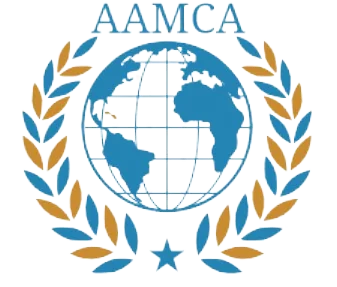Overview of the Fusion Energy Events in Chengdu
The second ministerial meeting of the International Atomic Energy Agency (IAEA) World Fusion Energy Group took place on October 14th in Chengdu, China. This significant event marks an essential step in advancing global collaboration in fusion energy, a promising and sustainable energy source. The meeting was co-chaired by the China Atomic Energy Authority alongside representatives from the IAEA, underscoring its importance in fostering international dialogue regarding the future of fusion energy.
Numerous senior officials participated in the event, representing a broad spectrum of nations and international organizations, as well as stakeholders from the private sector. This diverse attendance reflects the growing global interest in fusion energy technology, which has the potential to revolutionize energy production by providing a nearly limitless and low-carbon energy supply. The presence of such a varied group emphasized the meeting’s objective to build partnerships and cultivate a cooperative atmosphere for the sharing of knowledge, experiences, and technological advancements.
The agenda for the ministerial meeting included discussions on a variety of topics pertinent to the development and deployment of fusion energy systems. Participants engaged in dialogue on innovative research approaches and international projects aimed at accelerating the realization of fusion power. By bringing together experts and decision-makers, the event aimed to identify common challenges and propose collaborative solutions. The collective insights gained from the discussions are expected to contribute to the trajectory of fusion energy development and its implementation in different regions around the globe.
Key Highlights and Announcements
The Second Ministerial Meeting of the IAEA World Fusion Energy Group marked a significant milestone in the global pursuit of fusion energy. One of the key announcements from the event was the launch of the World Fusion Outlook 2025, presented by IAEA Director General Rafael Mariano Grossi. This publication aims to provide a comprehensive analysis of the current state of fusion research and its potential contributions to the global energy landscape. It serves as a vital resource for member states in developing their respective strategies for harnessing fusion energy.
In addition to the outlook document, the IAEA introduced a guidance publication specifically designed to assist countries in establishing national fusion energy programs. This guidance not only emphasizes the scientific and technical dimensions of fusion but also outlines policy frameworks and collaborations necessary to advance national initiatives. By providing structured advice, the IAEA aims to foster an environment where countries can implement effective fusion energy strategies aligned with international standards and best practices.
Furthermore, the designation of the Southwestern Institute of Physics as an IAEA collaborating center for fusion research and training is a significant development. This acknowledgment underscores the institute’s contributions to fusion energy research, enhancing its role in the international fusion community. Being recognized as a collaborating center allows the institute to engage more closely with IAEA initiatives, facilitating knowledge exchange and developing training programs for member states.
Overall, the emphasis placed on practical steps during the meeting highlights the commitment of member states to advance fusion energy initiatives. The collaborative efforts and resources shared during this event signify a collective move towards making fusion energy a viable alternative in the global energy mix, showcasing the dedication to foster a sustainable energy future.
Collaborative Efforts and Challenges in Fusion Research
The recent Second Ministerial Meeting of the IAEA World Fusion Energy Group highlighted the vital need for collaboration among various sectors, such as governments, academia, and industry, to advance fusion energy research. During the discussions, CAEA Chairman Zhongde Shan emphasized the importance of fostering an inclusive approach to fusion research. Such collaboration is essential not only for pooling resources and expertise but also for creating an environment conducive to innovation and effective problem-solving.
Fusion energy, hailed as a potentially limitless and clean energy source, faces numerous challenges that can only be addressed through collective efforts. Key issues include the technological hurdles linked to achieving sustained nuclear fusion reactions, significant financial investments, and regulatory frameworks that ensure safety and public trust. Public perception plays a crucial role in the advancement of fusion research, and ensuring transparency and accountability will be paramount in cultivating public support.
Throughout the meeting, participants identified several solutions that could enhance collaborative efforts in fusion research. One proposed solution involves establishing international partnerships to share research findings, which would enable multiple stakeholders to contribute and innovate more rapidly. Additionally, fostering public-private partnerships can blend the efficiency of the private sector with the regulatory oversight and long-term vision typically associated with government initiatives.
Another notable aspect that emerged from the discussions was the recognition that interdisciplinary approaches may be necessary. Engaging not only physicists and engineers but also social scientists, ethicists, and economists can give rise to a more robust framework for evaluating both the implications and applications of fusion technology. This strengthens the case for treating fusion energy development not as an isolated endeavor but as a vital contribution to the global energy landscape.
The Future of Fusion Energy: A Roadmap Ahead
The future of fusion energy is rapidly gaining traction as a promising solution to address the growing global energy demands sustainably. The Second Ministerial Meeting of the IAEA World Fusion Energy Group (WFEG) emphasized the necessity of a clear roadmap for the development of fusion technologies. Among the key outcomes from the technical panel discussions was the consensus that enhanced international collaboration is vital to accelerate progress in this field.
One of the primary conclusions drawn from the meeting was the recognition of the pivotal roles played by global organizations, particularly the International Atomic Energy Agency (IAEA) and the ITER project. These entities are essential in facilitating research, pooling resources, and fostering an environment that promotes knowledge sharing. The collaborative synergy among nations can produce a robust framework for developing fusion energy. This interconnected approach will enable researchers and engineers to overcome challenges that have historically hindered advancements in fusion technology.
The meeting also highlighted the importance of periodic gatherings of the WFEG. Such events serve as platforms for reviewing past progress, sharing innovations, and setting future goals. By bringing together experts and stakeholders from different backgrounds, these meetings can stimulate dialogue, align objectives, and generate actionable strategies that support the realization of fusion energy’s potential. With increased emphasis on robust partnerships, the hope is to streamline efforts that will ultimately lead to commercial viability.
In conclusion, the discussions at the IAEA WFEG meeting bring forth a strategic vision for fusion energy’s future. Emphasizing international collaboration and ongoing dialogues will be crucial in navigating the path ahead. The integration of various expertise and resources is expected to significantly enhance the feasibility of fusion energy as a sustainable source, ensuring a responsible solution to meet the world’s energy requirements.




